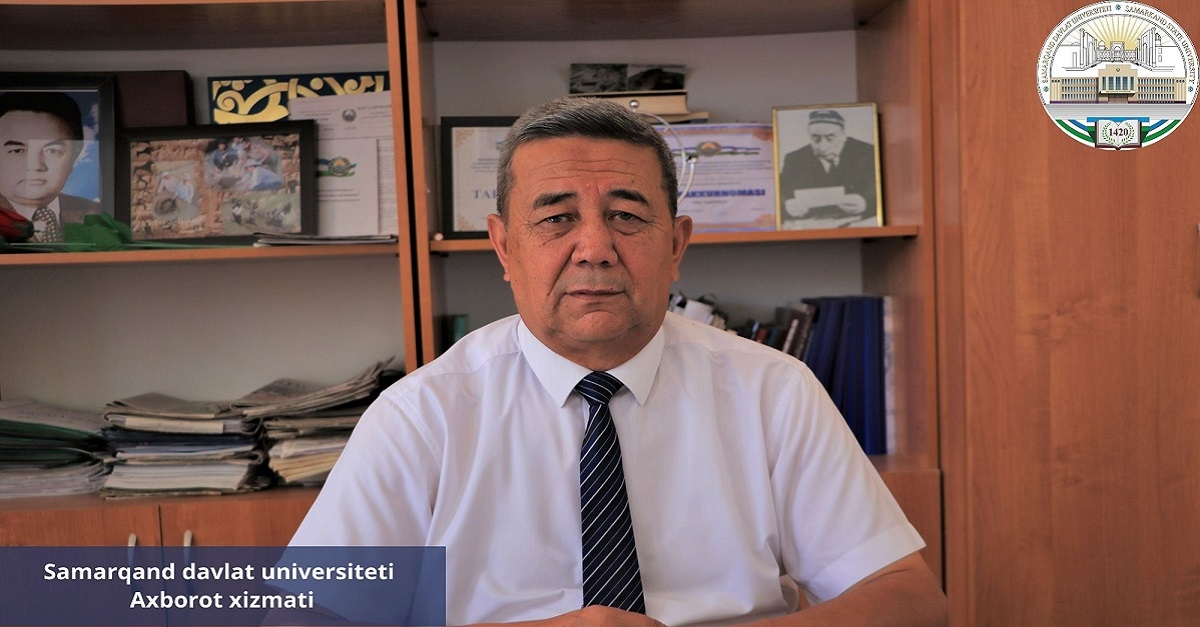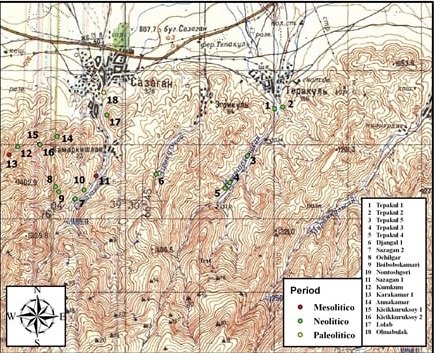Are you up to date with the latest scientific news of the archaeological expedition of Samarkand State University?

The object of research conducted by this archaeological expedition, which has been operating since 1944, during the years of independence of our Republic, are the monuments of the Stone Age of Zarafshan, in particular the Middle Zarafshan oasis, located on the northern slope of the Karatepa Range. mountain range. At present, more than 30 sites have been identified and archaeologically mapped, and archaeological excavations have been carried out at 10 of them. In particular, since 2017, research has been ongoing at the Neolithic site of Sazogon. These are the studies of the late professor. With the participation of foreign specialists (M. Tosi, A. V. Vinogradov, V. A. Ranov, K. Shimchak, F. Brunet, S. Mantelini) under the scientific supervision of Mavlon Dzhurakulov and directly under the executive supervision of Normuhammad Kholmatov, as well as teachers of the department , doctoral students, masters and bachelors. A large number of extracted archaeological objects were exhibited in the laboratory of the museum of archeology at the department.

The results of the study of these monuments and scientific innovations can be called a contribution to the development of the science of archeology of the Stone Age of Uzbekistan as follows:
1. The issue of anthropogenesis on the scale of the oasis was clarified on the basis of sources from the study of Middle Paleolithic sites (Almabulok) in the Middle Zarafshan oasis.
2. When studying the Stone Age sites of the oasis, valuable information was obtained on the paleogeographic, paleogeological, hydromorphological and modern physical and geographical field.
3. During the years of independence of our republic, a relatively new approach to the typological analysis of stone weapons of the Mesolithic space Sazogon 1, the discovery and acquisition of new Karakamar, Sargor spaces provided important information about the material culture of the Mesolithic communities of the oasis. On this basis, in the system of cultures of the communities of the Stone Age of the Zarafshan oasis, a until recently unknown cultural layer of the Mesolithic period was revealed (Mesolithic monuments of Chorbakty, Sazogon 1, Karakamar, Lower Mesolithic cultural layer of the Ashchigorsk space - c.ABB. XI-IX millennia BC. ) that have reached scientific justification.
4. Middle Zarafshan oasis. Based on the study of the Stone Age monuments of the northern slope of the Karatepa mountain range, it was established that this area was a unique "microcultural oasis" in the study of the material culture of the Stone Age. communities. This was studied in the monument of the Olmabulok Mousterian period, the lower cultural layer of the Achilgorsky area (XI-IX thousand layer of the Achilgor region, Sazogon 2 - Neolithic (7-5 thousand years BC), Tepakul 4 - Neolithic (6-4 thousand years BC), Dzhangal 1, Tepakul 3 - Neolithic (5-3 thousand years BC) monuments show the sequence of stages of historical development. On this basis, the question of the unity of the culture of the Stone Age communities and its autochthonous nature is being resolved (local, indigenous, local).
5. The Sazogon culture as an independent culture in the system of Neolithic cultures of the Central Asian region is scientifically substantiated, the historical roots of the origin of culture are determined. It is proved that this root was formed on the basis of the material culture of the lower Mesolithic cultural layer of the Samarkand region, Chorbakhty Mesolithic monuments, Sazogon, Karakamar, Achilgorsky district. Here it should be said about a new approach to the analysis of existing archaeological resources, the acquisition of new archaeological resources, Kyzylkum, the Lower Zarafshan Mesolithic oasis (monuments of Chorbakti), Neolithic communities (Echkiliksai, Ayakagitma, Daryosoy, Chorbakti, Khuudzhayli monuments) put on the agenda the need for rethinking the question of the roots of culture. From this point of view, based on an analysis of the sources of these cultures (the stone industry of these monuments has features characteristic of the Paleolithic and Mesolithic communities of Central Asia), it is appropriate to draw a conclusion.
6. Sazogon 1.2, Dzhangal 1, Tepakul 3.4, according to the finds of the Achilgor sites (step weapons, microliths, tools and stone objects associated with grain crushing), Orta Zarafshan. the first agricultural farm on the banks of large streams on the northern slope of the Karatepa ridge (where the sun falls steeply, with a thin layer of soil).
7. When studying sites associated with the Sazogon culture, it is understood that the Neolithic Sazogon communities had mutual cultural contacts with the neighboring communities of Kaltaminor (Lower Amu and Zarafshan, Kyzylkum), Central Fergana and Hissar (territory of Tajikistan). data (in the raw materials of the stone industry, ceramics, stone tools).
8. In the system of sazogon cultural monuments, the remains of a hearth, piles of bone remains of animals, as well as in connection with them, round stone devices, and the whole body of a goat were found in the Achilgora region. in the Achilgora region and they were analyzed together as a complex of religious beliefs and included in the science of archeology in Uzbekistan.
9. It is known that the researchers of the region associated the beginning of the ethnic process, the formation of the "ethnos" with the period of the last Paleolithic, and this process was more clearly manifested in the Mesolithic and Neolithic periods on the example of "archaeological cultures", that is, they recognized in their studies that they are independent ethnic communities. On the scale of Central Asia, there is information about this in the studies of such specialists as V.M. Masson, S.P. Tolstov, A.V. Vinogradov, U. Islamov, V.A. At the moment, the Neolithic Sazogon communities can be considered as an ethnic group living in a certain territory and distinguished by the originality of its material culture in the system of neighboring communities, chronologically of the same age.
Normakhamad Kholmatov
Samarkand State University
Head of the Department of Archeology, Professor

